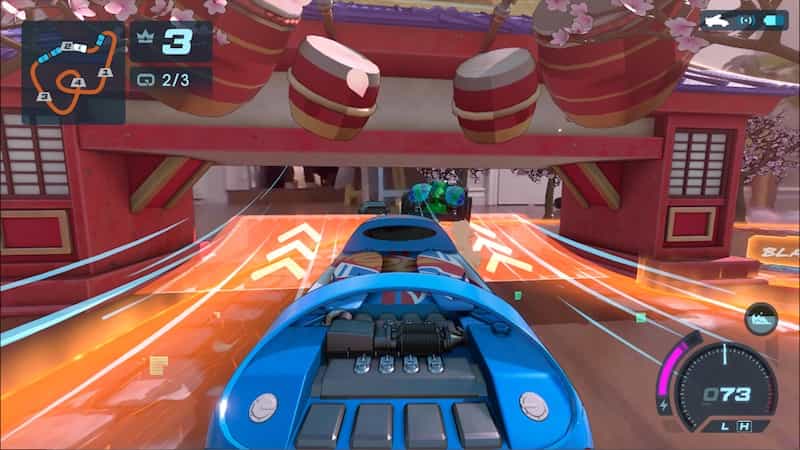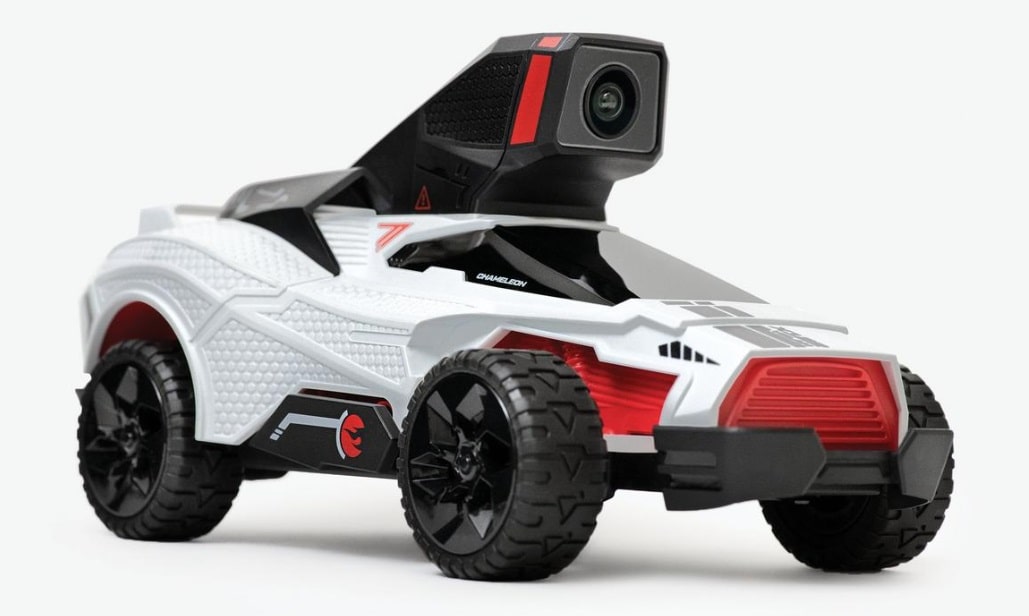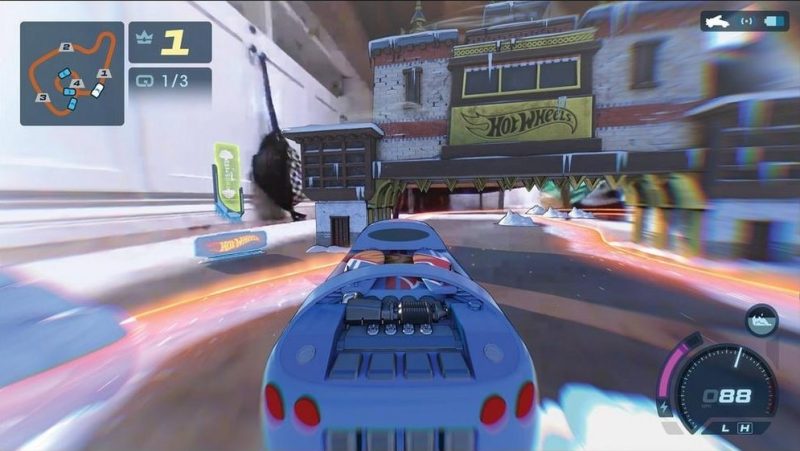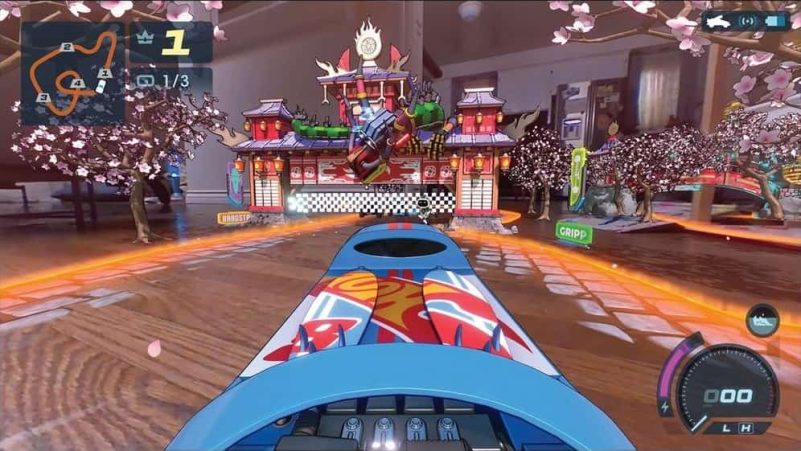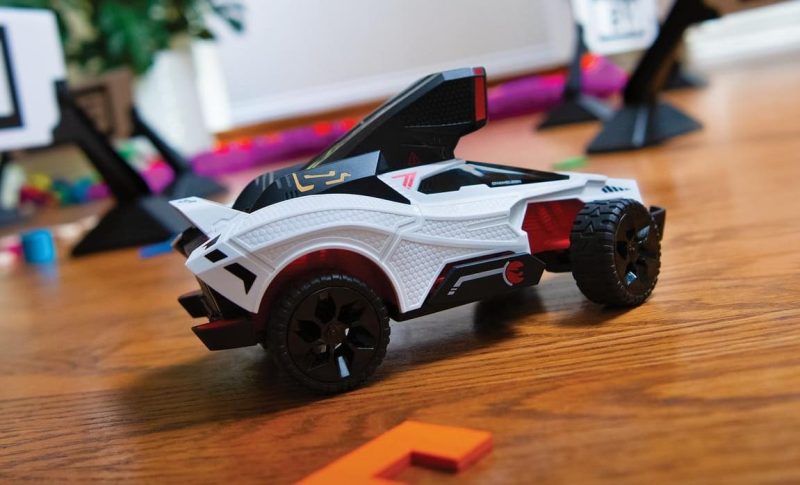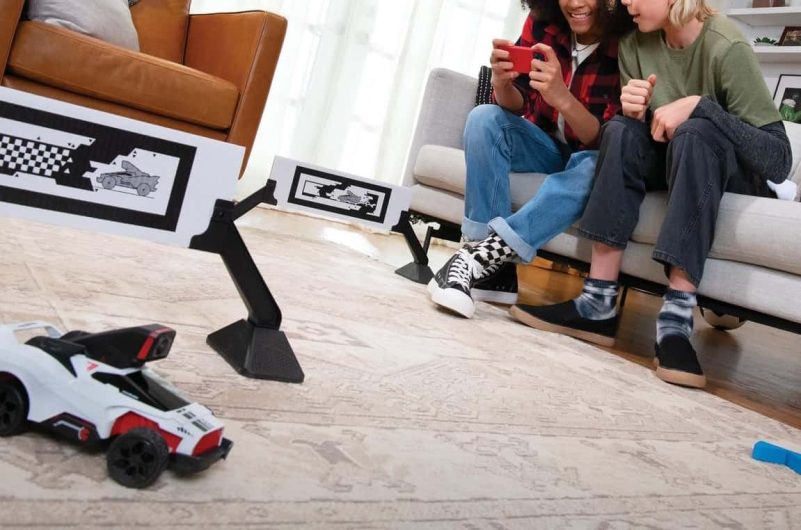Hot Wheels Rift Rally PS4 Review – From handhelds to consoles and PCs, plenty of games along the way have attempted different types of mixed reality. The Nintendo Switch received its own type of mixed reality racing game last year, and now the PlayStation 4 lands its own version, called Hot Wheels Rift Rally. While this package implements some interesting ideas, the bottom line is it’s not a product intended for the general consumer.
Hot Wheels Rift Rally PS4 Review – Mixed Reality With Mixed Results
At the beginning, there’s this cool sense of interacting with the world while still playing a game. I liken it to when I first played Little Deviants when the PS Vita launched, feeling quite cool as I pivoted around, trying to keep the Deviants in-frame. It was quite a fun way to test out the portable’s hardware.
Before all that, though, you need to set up your remote car, aptly named the Chameleon. This little apparatus takes on the chassis and traits of whichever in-game car you choose to use. On the side of the Chameleon hides a USB-C port and a power button. These are hidden by a small decal piece that rotates over them, keeping the aesthetic while keeping it practical.
Connecting is rather simple in theory and mostly in execution. Instead of communicating directly with the PS4, the Chameleon instead works through your local Wi Fi network. You establish this connection in-game, which uses rather straightforward and easy-to-understand instructions. The semi-odd thing is the program won’t auto-detect what signals are available around you. Instead, you enter in the name of your signal and password. Not a big deal, really, but I hadn’t had to establish that kind of connection for anything in a long while.
Laying A Track
Along with the Chameleon comes four Rift Gates, which consist of four decaled cardboard pieces that attach to plastic mounts. While driving, the game detects these and turns them into different types of checkpoints, depending on the theme of each race. Sometimes it’s a gate that can close on you (and yes, your car stops if the gate catches you), and sometimes it’s just a flashy-looking checkpoint.
More flare comes with the track that the game creates around the four Rift Gates, again depending on the themes of the race. You can drive through water, get hit by catapult fire, or even zip through laden cherry blossom petals. These all make for great visual effects on their own, but they also affect how the Chameleon physically moves. Go through water in-game, and the Chameleon slows down for that duration. Get hit by catapult fire, and you slow down for a while.
Conversely, like any racing game, you get free reign to drift and boost, with the former gathering the necessary energy for the latter. I only received one Chameleon, but I have some educated guesses about how these work with the Chameleon. In a local co-op race, I assume that another Chameleon you race against slows down to compensate for your boost because your Chameleon doesn’t actually move faster when boosting.
You also get the normal boost effects on-screen like with any game, but the display doesn’t move any differently. It works and has some interesting thought behind it to make it work. It just feels peculiar, like when you expect to drink Sprite but get water.
Video Game Driving In Real Life
A similar effect takes place with drifting. On a drift, the car slows down drastically and slowly turns while the drift animation takes place. Once your car normalizes in-game, the car returns to normal speed. The concept is rather cool, but the coolness comes from the mixed reality elements, because just watching the cars drive around your house is far less dynamic (unless the cat gets involved).
Controls are responsive and don’t include any input delay. Though, getting used to operating a physical vehicle takes a bit to get used to. Unlike video game cars, the Chameleon has actual weight, and changing direction takes extra time. It’s kind of cool to have to adapt to the physics of driving an actual remote car just because it creates an entirely new sensation compared to just racing in-game cars.
This might be nostalgia screaming at me, but I’m honestly rather bummed that I can’t just watch my car drive around in my house. Simple tracks allow this, sure, but ones with in-game obstacles throw things off. Yes, this defeats the purpose of buying a mixed reality experience, but it’s still something worth considering.
After a while, the novelty of this product shows itself. Like with board games, you assemble and disassemble the game every time you want to go a round. This isn’t to that extent, but you do have to shore up a fair amount of real estate in your overall living space just to play. That is unless you run a short track, which gets boring fast.
(Mixed) Reality of Limitations
You also need that space to be wide open for one reason: the Chameleon’s camera. Far too frequently a tire got caught on a corner when I tried to cut said corner, even though the camera showed enough clearance. It just doesn’t use a wide enough lens to reflect the width of the Chameleon. It’s not off by more than an inch or two, but if you try to make a more dynamic track in your house, you will definitely struggle with spatial awareness.
To dig further into this point, the game does not detect actual obstacles you place on your track, and the game often runs that track through the obstacles. This affects my living situation greatly because we have rather narrow hallways and doorways with inherited furniture that takes up a fair amount of that space.
Then there’s battery life. A charge lasts for about two hours of steady play time, which is more than enough for a non-enthusiast, but I can’t say for sure what a hardcore fan would say to this. Then take into account that the car takes an hour to charge.
All devices lose charge naturally over time, which makes the ratio of charge time to usage time important. If it sits for a couple weeks before you use it again, it’s likely discharged. Then you plug it in and wait for it to charge.
As long as you anticipate this, you’re fine. For me, if I realize I need to wait to charge it, my ADHD brain will just do something else instead. This isn’t an inherent negative, but it is the nature of the beast.
The Price of Admission
Finally, there’s the $130.00 price tag. Granted, it’s worth the cost of admission for what the package includes (one Chameleon, four Rift Gates with stands, and the game code). An added bonus is that the Chameleon also works with the mobile version, meaning you can go to a friend’s house and play using your phones.
Even with all of that, this is still a novelty item for a highly specific audience. To boot, there’s no bundle that includes multiple Chameleons for local coop racing. That leaves you either taking turns with friends and family or shelling out another $130 for a second setup. One nice caveat to this is that you can play over your home network with multiple consoles if you bought two bundles.
As expected, there’s also no online multiplayer. Though, I don’t even know how that would logistically work anyway, considering the game depends on both the Chameleon and the physical setting to drive in.
RC Racing For A Specific Audience
The greatest aspect of Hot Wheel Rift Rally is that it’s an all-inclusive product that lets you dabble in both mixed reality and RC racing at a relatively low cost. Rift Rally also uses some thoughtful ideas to bring its intentions to life. However, software limitations, spatial requirements, cost, and battery life all stack against those ideas. Equally so, if you know what you’re getting into and still want it, there’s something fun here to experience.
Hot Wheels Rift Rally is available now for PS4.
Review unit kindly provided by publisher.
